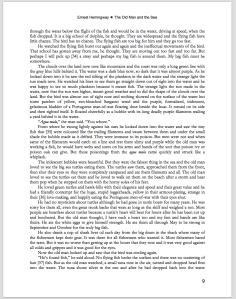Trigger Warning: Rape
Throughout 1,000 Splendid Suns by Khaled Hosseini the rhetorical situation is difficult to nail down.
For instance, when Mariam is first raped by her husband Rasheed, Hosseini writes within the narrative voice of Mariam’s point of view, “Now and then, his ear rubbed against her cheek, and she knew from the scratchy feel that he had shaved it” (45). The inauthentic reader falling into the role of narratee will see the description of the stubbly lobe merely as significant detail included to enforce the mimesis of the situation. It is in fact masterful to include this detail at the moment of Mariam’s rape as it builds upon the aesthetic emotion of the scene before and after other passages describing onions on Rasheed’s breathe and the glowing hands on his watch after they have finished (45).
However, the passage about Rasheed’s earlobe also functions according to the needs of the authorial voice seeking to reveal to the authorial audience Rasheed’s true nature via the hermeneutic code. Just a few pages before that, still in Mariam’s point of view, Hosseini describes Mariam’s meeting Fariba and her son Noor on her first time out of Rasheed’s house since coming to Kabul after her mother’s death:
“You’re Rasheed jan’s new wife, aren’t you? […] You’re so young! […] My name is Fariba. I live on your street, five houses to your left, the one with the green door. This is my son Noor.”
The boy at her side had a smooth, happy face and wiry hair like his mother’s. There was a patch of black hairs on the lobe of his left ear. His eyes had a mischievous, reckless light in them.
(39)
The inauthentic narratee may only see the hairy lobe on Noor as a significant detail added for the sake of giving Noor an easy to remember character trait. However, the authorial audience will recognize instantly that a notably hairy earlobes are a trait that might be passed from father to son, creating an enigma within he hermeneutic code.
In many modern Western cultures, names are chosen for aural aesthetics, not meaning, and even when they are chosen for meaning they are still random in describing who we actually are. My own name Samuel means “asked by G-d” or “the name of G-d” in Hebrew, but my parents didn’t consider that. However, Noor means “light” in Arabic and because Noor is a character in a book written by a man who speaks Arabic, his name was intentionally chosen for his authorial function in the novel. In this case, Noor is figuratively shedding light on Rasheed’s past affair with Fariba. Hosseini consciously chose “Fariba” because it means charming and enticing.
(See page 41)
Even within a cultural code in which he can legally abuse his wives, Rasheed is still guilty of adultery.
The hairy ear lobes implying adultery are a function of the authorial voice in A Thousand Splendid Suns because they are details which Hosseini includes only at times of great trauma for Mariam, the point of view character, is suffering from trauma. After Mariam first meets Noor on the street, she is overwhelmed by attention from all the other women to point of hyperventilating. For the inauthentic narratee, the stress of the situation is the focus, they empathize with poor Mariam. So what if one character has hair on his earlobe and another shaves his? A girl is being raped! Never once does the narrator explicitly connect the shaved ear lobe with the hairy one, but the synthetic nature of text implies that while the narrator is seeking to tell Mariam’s tragedy, the author also seeks to reveal Rasheed’s hypocrisy within the cultural code of pride and honor which he uses as justification for his abuse of his wives. The authentic authorial audience will be able to shed the mimetic shock of what is happening to the characters and pay attention to the word the author is putting on the page.







